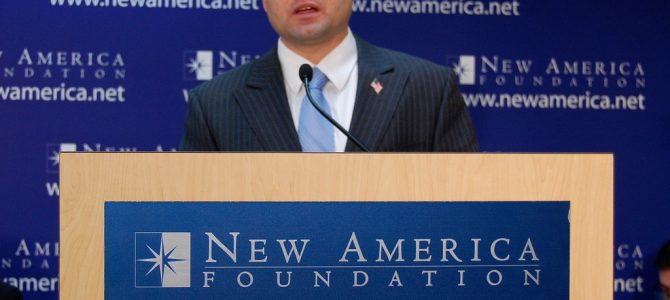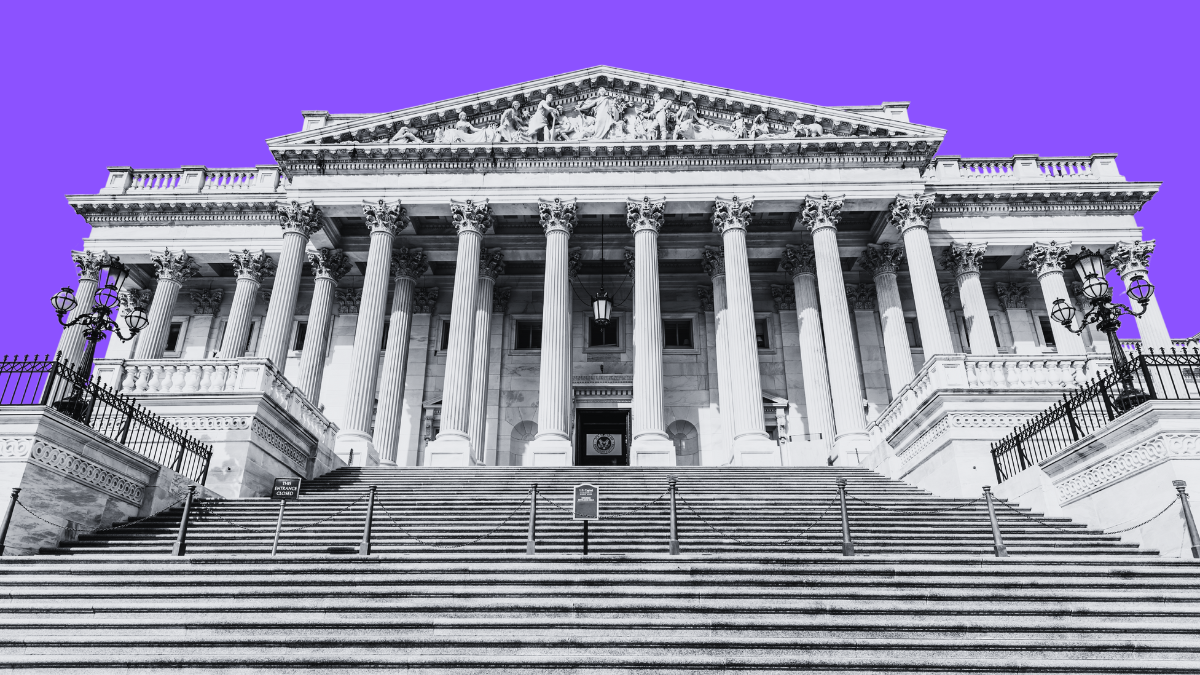
A little gaffe caught my eye recently that sums up the desperate state of the Democratic Party right now. It was an alert from the New York Times teasing the first lines of a David Leonhardt op-ed describing Tom Perriello, who is running for the Democratic nomination for governor of Virginia, as a “populist former Congressman from Appalachia.”

If I had been drinking coffee at the time, I would have spit it out. I live near Charlottesville, Virginia, Perriello’s stronghold of support for his one and only election victory ever, and I know a little about his background, ideology, and personality. So when I saw him described as a populist, and even better as an “Appalachian populist,” I knew what a howler that is.
Apparently, a lot of other people do, too. To his credit, Leonhardt graciously acknowledged our corrections on Twitter.
@ChrisWestVA @GregHabeeb @Tracinski Thank you for the fact-based criticism. FYI: https://t.co/ORfEL8d7Yc
— David Leonhardt (@DLeonhardt) March 30, 2017
He updated the piece to describe Perriello as “a populist former Congressman who represented rural Virginia,” which is technically true since Virginia’s fifth district runs from Charlottesville down through Lynchburg and includes a big chunk of rural Southside Virginia.
But I get the sense that Leonhardt and a lot of others are still trying to cling to the narrative of Perriello as a rural savior who will help bring his party back from the edge. You can understand why. Democrats lost the last election—one they know they could easily have won—largely because they lost a lot of traditional Democrat voters among rural, blue-collar whites. Those voters aren’t all hillbillies from Appalachia, and include a lot of Midwesterners and New Yorkers. But they are voters who share many of the same cultural sensibilities. So Democrats are searching for an Appalachian savior, someone who can reconnect the party to those rural, blue-collar voters.
I can also appreciate why the Perriello campaign would be pushing this whole “Appalachian” angle, seeing as how his opponent in the Democratic primary, Tidewater physician Ralph Northam, speaks with a distinct drawl that Perriello—for reasons that are about to become obvious—cannot match. He’s in distinct danger of being out-bubba’d.
If you know much about Perriello, you know that any rural affectations are an illusion. To begin with, Charlottesville is not exactly Appalachia. Yes, it’s in the foothills of the Blue Ridge Mountains, so geographically it’s on the border of Appalachia. But we’re not talking about geography here. We’re talking demographics. Culturally and politically, Charlottesville is about as representative of Appalachia as Austin is of Texas. As another local put it, “there’s a big difference between the cow side of the mountain and the horse side.” Charlottesville is definitely on the horse side. It’s a left-leaning university town full of upper-middle-class Whole Foods types. (On the plus side, the food here is excellent.)
That’s exactly the kind of background Perriello comes from. He’s the son of a prominent local pediatrician and grew up in Ivy, an enclave of million-dollar homes to the west of town—not exactly the humble mountain shacks of Appalachia. He then went off to Yale and DC and spent time working for a nongovernmental organization funded by George Soros. Seriously, if I were making up the resume of a fictional lefty elite, this would be it.
As for Perriello being a populist, he was elected for his only term of office by a margin smaller than 800 votes—and that was in 2008, the best year for Democrats in a generation. Two years later, he was booted out of office by the actual populist uprising of the Tea Party movement. I know because I was there.
So why are people grasping at this mirage of the “Appalachian populist”? Well, Northam voted for George W. Bush, and Republicans in the Virginia Senate once recruited him hard to get him to flip over to their side. He is considered the more conservative candidate and the one more tied into the Clinton machine in the person of Gov. Terry McAuliffe. Perriello is considered more reliably “progressive” on economic issues. Leonhardt says, “Many observers rightly see the contest as a sign of the Democratic Party’s direction.”
In other words, it’s a reprise of the primary contest between Hillary Clinton and Bernie Sanders.
The weird thing is that Democrats actually see the Bernie Sanders wing of the party as their ticket to getting back in touch with the little guy out in the heartland. Leonhardt ends by recommending a profile of Perriello that uses the word “populist” about 80 times, but always in the context of “economic populism.” They are desperately clinging to the notion that Sanders-style wefare-statism is the road back to a majority.
You don’t need to remind me that Donald Trump hardly has the pedigree of a populist, either. But that just raises the question of how he managed to pull it off. (More or less. How popular can a populist be when he doesn’t even win a plurality of the vote?) Trump won the support and even the enthusiasm of many of those lost blue-collar voters by appealing to their values and their concerns, and above all by rejecting the “political correctness” they feel big-city elites use as a club to force everyone else in the country to conform.
In short, Trump won because cultural populism is a bigger draw with heartland voters than economic populism.
This implies that Democrats are barking up the wrong tree when they go looking for a younger Bernie Sanders to rouse the rabble back to their side by railing against “big money” and promising everybody more free stuff. The problem is summed up in a line from that profile: “Young Democratic political hopefuls are, in these post-Trump days, very much in demand.”
If you remember the septuagenarian Democratic primary lineup in 2016, you’ll understand why young Democratic politicians are in such demand. But it’s a bit of an evasion to attribute this to the “post-Trump” era, because it was true before Trump even decided to run. It would be more accurate to ascribe this to the post-Obama era. It was during Obama’s presidency, and in reaction to his leftward lurch, that Democrats lost the House and the Senate and were wiped out in the statehouses. That is why the Democrats are so short on young political talent: all of the political careers, including Perriello’s, that were cut short in the Obama years.
The people who were hit hardest in the Tea Party waves of 2010 and 2014, by the way, were the conservative Democrats. In other words, precisely the sort of people the party would want if it were actually courting the Appalachian vote. But it’s not. If Democrats wanted an “Appalachian” savior, well, there was Jim Webb, who wrote a whole book in tribute to the original hillbillies: Scotch-Irish immigrants to America. But Webb was one of the least successful candidates in the 2016 Democratic primaries and always seemed like the odd man out.
Where is Webb now? He was just pressured into refusing an award from the U.S. Naval Academy because of politically incorrect views he expressed nearly 40 years ago about women in combat. That is exactly the sort of thing that alienates heartland voters, yet that is the direction the Democratic Party has chosen to move.
The basic contradiction for the Democrats is that they want to turn their party to the far left—or to be more accurate, they want to embrace the fact that it has already turned to the far left—yet they still cling to the fantasy that they represent “the little guy” out in the heartland. Hence the need for an “Appalachian populist,” or the need to invent one if they can’t find him.
The causes that drove heartland voters away from the Democratic Party go back decades, as a result of deliberate cultural and ideological choices that Democrats show no inclination to reverse. No Appalachian savior, certainly not a fake one like Tom Perriello, is going to change that.
Follow Robert on Twitter.









